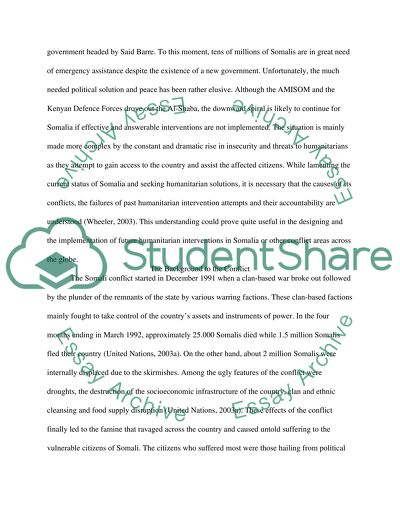Cite this document
(“Somalia Case Study: How Far the U.S-led Humanitarian Intervention from Essay”, n.d.)
Somalia Case Study: How Far the U.S-led Humanitarian Intervention from Essay. Retrieved from https://studentshare.org/miscellaneous/1621417-somalia-case-study-how-far-the-us-led-humanitarian-intervention-from-1992-to-1997-was-accountable-to-solve-the-country-political-conflits
Somalia Case Study: How Far the U.S-led Humanitarian Intervention from Essay. Retrieved from https://studentshare.org/miscellaneous/1621417-somalia-case-study-how-far-the-us-led-humanitarian-intervention-from-1992-to-1997-was-accountable-to-solve-the-country-political-conflits
(Somalia Case Study: How Far the U.S-Led Humanitarian Intervention from Essay)
Somalia Case Study: How Far the U.S-Led Humanitarian Intervention from Essay. https://studentshare.org/miscellaneous/1621417-somalia-case-study-how-far-the-us-led-humanitarian-intervention-from-1992-to-1997-was-accountable-to-solve-the-country-political-conflits.
Somalia Case Study: How Far the U.S-Led Humanitarian Intervention from Essay. https://studentshare.org/miscellaneous/1621417-somalia-case-study-how-far-the-us-led-humanitarian-intervention-from-1992-to-1997-was-accountable-to-solve-the-country-political-conflits.
“Somalia Case Study: How Far the U.S-Led Humanitarian Intervention from Essay”, n.d. https://studentshare.org/miscellaneous/1621417-somalia-case-study-how-far-the-us-led-humanitarian-intervention-from-1992-to-1997-was-accountable-to-solve-the-country-political-conflits.


